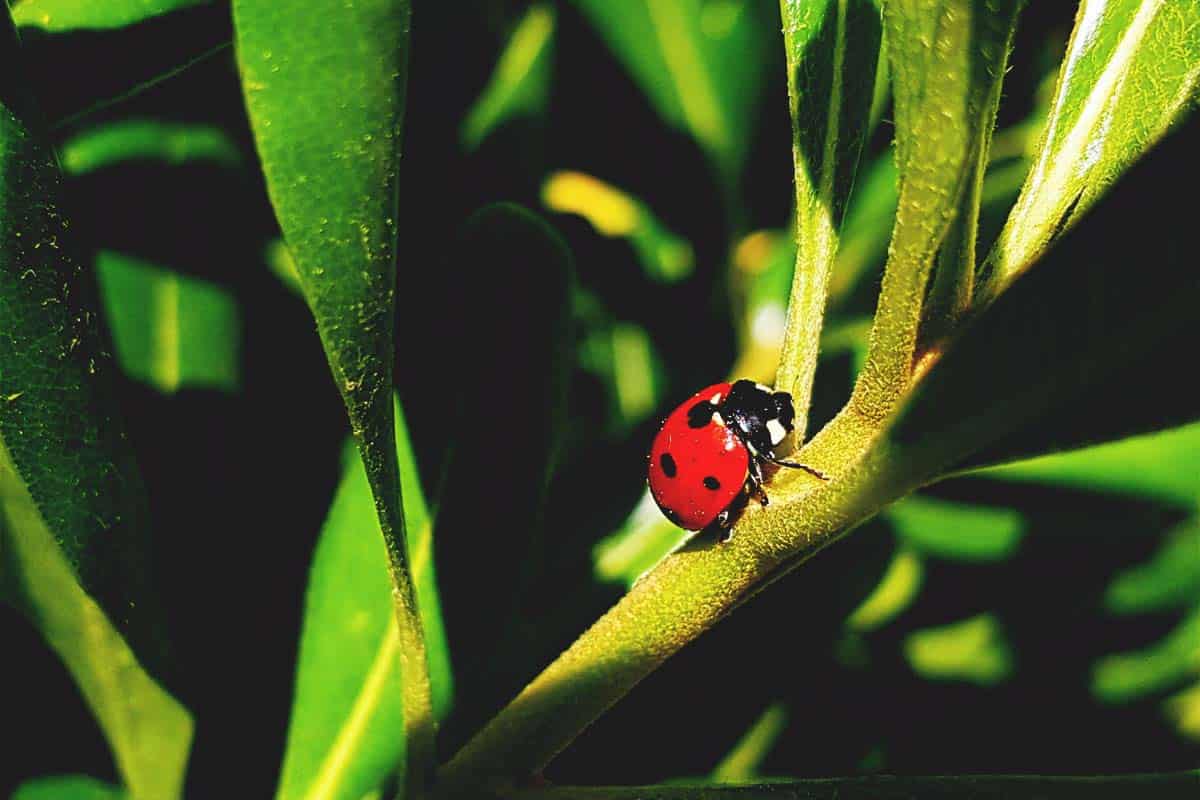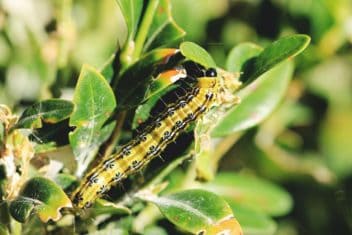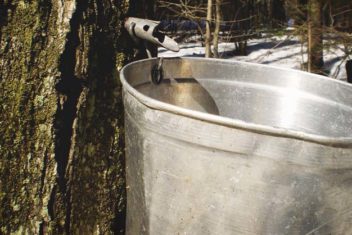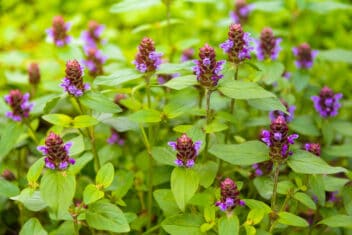It’s hard not to love ladybugs. The little red critters are the good guys in your garden, and of course, they’re undeniably cute. Appearances aside, you should learn how to attract ladybugs because these round, brightly colored beetles eat the pests that harm your plants. They’re one insect you definitely want to have in your garden.
You might be surprised to learn that there are over 5,000 species of ladybugs worldwide. Ladybugs aren’t just red and black; they come in orange, yellow, black, and brown. They all have different spots on their wings, and some don’t have any spots at all!
Ladybugs are often called ladybirds or lady beetles. There are over 200 different species native to North America. The most recent arrival is the Asian ladybug that came over on foreign trade goods.
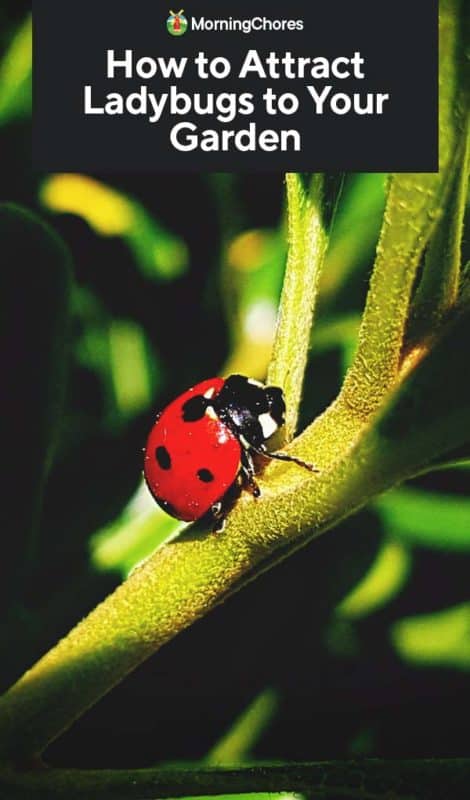
Ladybug Basics
Everyone is familiar with ladybugs because of their cute appearance, but you might not know the basics of these little beetles.
Basically, they’re one of the good bugs in the garden, and they eat a variety of plant-harming pests. Some ladybugs eat powdery mildew, and adult ladybugs love flower nectar and pollen, which helps your garden.
Ladybug larvae are just as important in your garden as adult ladybugs. Without larvae, you can’t maintain a ladybug population.
Ladybugs start eating aphids in their larval stage. Young larvae can eat dozens of apids per day, and older larvae eat up to 100 aphids per day. Ladybugs lay their orange or yellow eggs in a cluster near aphid colonies, and the eggs take about a week to hatch.
Ladybug larvae look nothing like the adult ladybugs we know. They look like small, alligator-like critters and have elongated, rigid bodies that are mostly black with a few orange or red patches.
The Advantages of Ladybugs in Your Garden
Are you wondering why you should attract ladybugs? Originally, I felt the same way! I knew they were cute; I decorated my first child’s nursery in a ladybug theme, but why role did they play in the garden?
The most significant advantage of ladybugs in the garden is to have a population that can respond to harmful insects. Despite their adorable appearances, ladybugs are predators for a variety of harmful pests that might invade your garden, such as:
- Aphids
- Whiteflies
- Mites
- Mealybugs
- Leafhoppers
- Scale Insects
Ladybugs hunt and feast on the pests that way to feed on your plants. You don’t have a need for insecticides with a healthy population of ladybugs crawling throughout your garden beds. Using natural enemies of the pests invading your garden rather than chemical methods is called biological control.
Did you know that a single ladybug eats up to 5,000 aphids in its lifetime? That’s impressive and absolutely why you need to have these in your garden!
They also help pollinate your garden as they move from plant to plant.
How to Attract Ladybugs to Your Garden
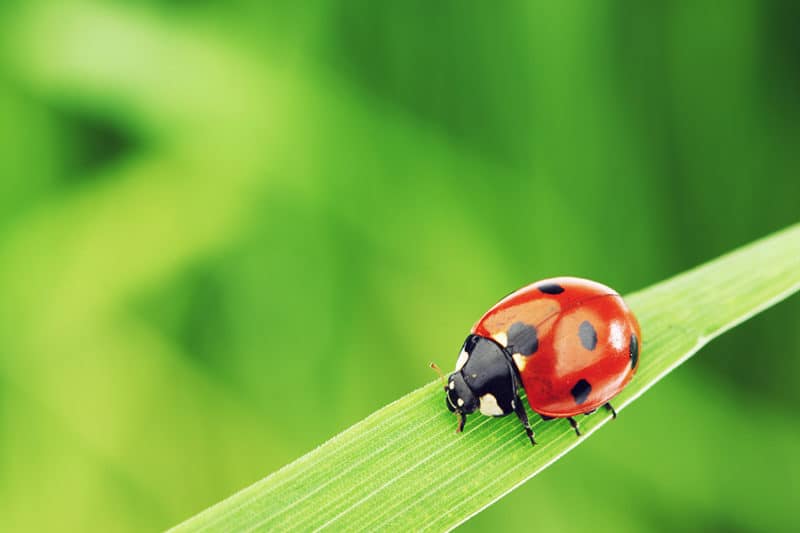
The best way to attract ladybugs to your garden is to provide their food. Ladybugs are like any other animal; they flock to food sources. Ladybugs eat two things: other insects and pollen. They need both to survive, and if you have them in abundance, ladybugs will love your garden.
1. Pick Plants That Attract Ladybugs
Typically, you want to have plants that have flat flowers, like landing pads, and many of their favorite foods are white or yellow. Here are some plants you can add to your garden to attract ladybugs.
- Angelica
- Calendula
- Caraway
- Geranium
- Blue Botle
- Mint
- Dandelions
- Tormentil
- Cilantro
- Chives
- Fennel
- Dill
- Parsley
- Cosmos
- Feverfew
- Marigold
- Statice
- Yarrow
Keep the flowers deadheaded, so the plants continue to produce flowers all summer long. When the flowers die, plants produce seeds instead of new flowers.
2. Plant Twice As Many Herbs
An easy way to attract more ladybugs is to plant twice as many culinary herbs as you need for cooking. Harvest half the plants as needed, but allow the other half of the herbs to produce small flowers to attract ladybugs. Flowering herbs are some of the best plants for inviting ladybugs.
3. Attract Bad Insects with Decoy Plants
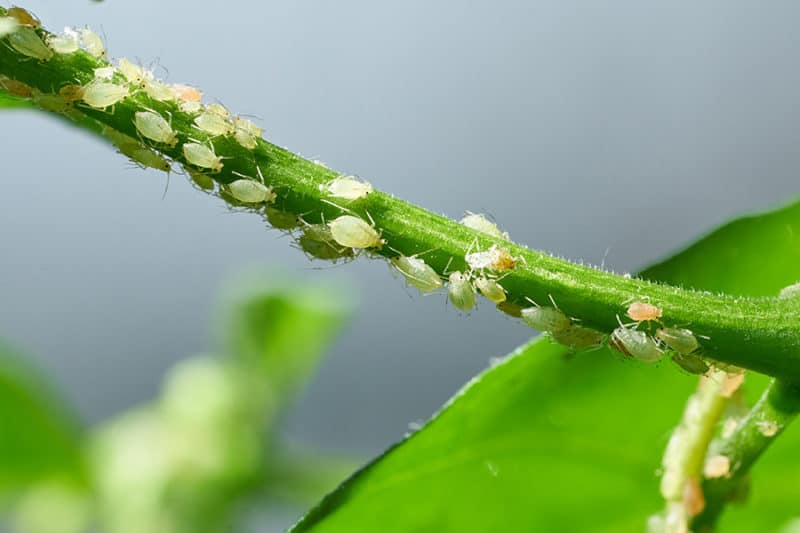
This tip seems counterproductive. We want ladybugs to keep the harmful pests away, so why are we attracting other insects?
Leaving aphids and other pests alone on decoy plants in your garden helps to attract ladybugs. Decoy plants keep your preferred plants bug-free while attracting ladybugs.
You can place these decoy plants in your garden.
- Radishes
- Early Cabbage
- Marigold
- Nasturtium
4. Provide Ground Cover for Protection
Beneficial insects in your garden need ground cover for protection. They need to hide from predators, in particular birds and larger insects.
Try to grow low-growing plants, such as thyme, mint, or oregano, to give them the coverage that they need. Another choice is to cover the soil with a layer of cut leaves or straw mulch.
5. Stop Using Insecticides
Another critical step to attracting ladybugs is to stop using any insecticides. Insecticides kill all insects, not just the bad ones. They quickly kill off a healthy ladybug population.
6. Shallow Plates of Water
Here is another trick to attract ladybugs: place shallow plates of water for the ladybugs to drink out of. You also can build ladybug houses to provide shelter for these insects as they drink. Providing appropriate water sources is a necessity, so try filling saucers with pebbles and water. Insects can perch on the stones and get a drink without falling into the water.
7. Build a Ladybug House
Another thing that you can do is provide a ladybug house. A ladybug house is typically a small wooden box that is filled with wood pieces, like bamboo canes. Ladybug houses also attract other beneficial insects, like bees and green lacewings. These insects shelter and hibernate in these wooden structures.
Ladybug homes can be in many different shapes and sizes. The simplest option is thread pieces of twine through a hollow tube such as a piece of PVC pipe or a cardboard paper towel roll. Then, tie the string in a knot and hang it on a fence or post near your garden. Place a few raisins inside your ladybug home to welcome them.
8. Spray Your Plants with Insect Attractant
You might not have heard of insect attractants, but they do exactly what their name says – attract insects. Insect attractants are typically organic and don’t harm your plants. You also can make up your own by mixing ten parts water with one part sugar and one part brewer’s yeast or whey yeast. You can also use honey instead of sugar if you prefer.
This supplement food solution can help with their diet of pollen and insects. It also encourages the ladybugs already in your garden to stick around.
9. Consider Purchasing Ladybugs
Of course, if all else fails, you can buy ladybugs via mail order online. If you do decide to go this route, you have to release ladybugs correctly, or they’ll all fly away.
When your ladybugs arrive, they need to be released in the evening into a wet garden that already has some aphids. If you release them during the day, they will fly away. They will also leave if you have a dry garden. If the garden has no food – like aphids – they’ll fly away as well.
If you’re unable to release the ladybugs immediately in the evening, the next best choice is to store them in the refrigerator until you have time to do so. Ladybugs deteriorate quickly when left at room temperature.
Keep in mind that while mail-order ladybugs are wild-caught, they most likely come from a different part of the country. That means they might carry diseases or parasites that don’t exist in your part of the country. These ladybugs won’t have any resistance to diseases from your area, and native ladybugs will be exposed to different diseases.
Are Ladybugs Harmful to Humans?
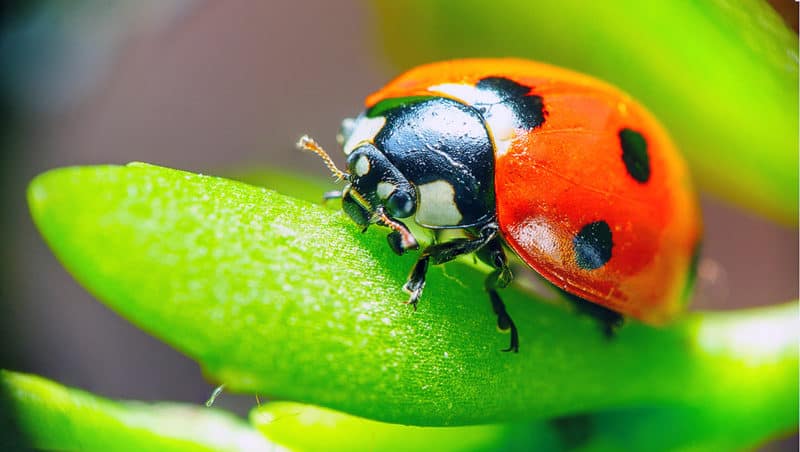
I remember my grandma telling me years ago not to touch a ladybug because they bite. It turns out; my grandma wasn’t totally wrong.
Unlike most insects you might find in your garden, ladybugs are generally harmless. They won’t sting you, destroy your plants or property, or spread illnesses to humans or pets.
However, ladybugs can and do bite if provoked. They have mandibles that let them bite on other soft-bodied bugs. If you are bitten, it won’t cause anything more than a bit of discomfort. Ladybug bites rarely become infected or cause an allergic reaction.
Final Thoughts
Cultures all over the world cherish and love ladybugs. Folklore tells us that killing a ladybug brings sickness, sorrow, and misfortune. Some people even believe the little bugs bring you good luck. In your garden, their ravenous appetites help decrease large volumes of plant-eating pests, such as mites, aphids, mealybugs, and leafhoppers.
